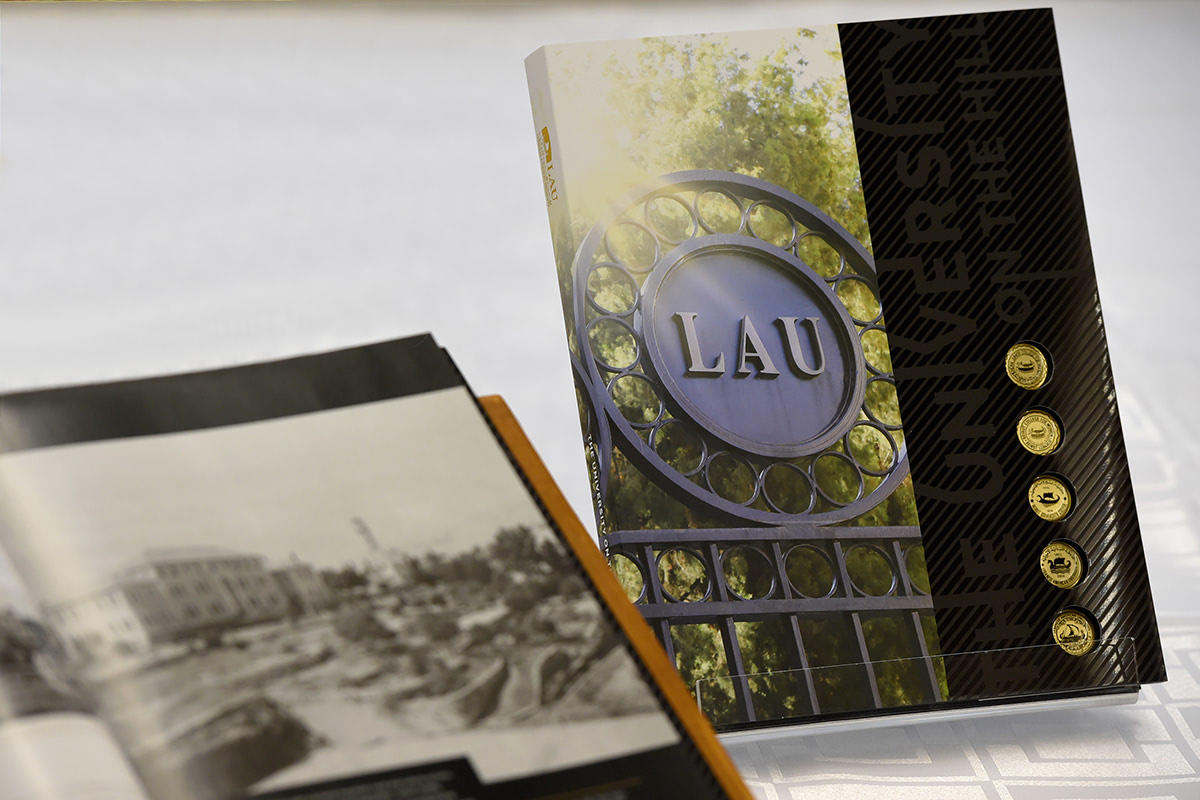LAU Launches its First-Ever Commemorative Book
The University on the Hill represents Dr. Joseph G. Jabbra’s homage to all those who chose to accompany the institution on its journey through the decades.
In a parting gesture before he brings his long presidency to a close, Dr. Joseph G. Jabbra has gifted the LAU community its first-ever Commemorative Book, released this week.
The University on the Hill: The Remarkable Evolution of a Small Women’s College into a World-Class University was initiated by Dr. Jabbra to ensure that the university would have in its possession an exhaustive and cohesive record of its history for posterity.
Forever upholding his motto that “the best gift in life is that of giving,” he explained that “the overarching intention of this book is both to salute and honor the members of the LAU family who, throughout its history, have been animated by an exemplary determination to give without expectation of reward.”
Dr. Jabbra launched the project under the leadership of long-time LAUer and Former Assistant Vice President of the Marketing and Communications Department Peggy Hanna, who in turn recruited Dr. Maria Bashshur Abunnasr as managing editor, and senior researcher and writer Zina Hemady. Faced with the monumental task of supplementing archival material, the team called on the help of Sana Kouatly – then a Senior Communications Specialist at LAU’s Strategic Communications Department (Stratcom) – for support with interviews and Sevine Fakhoury (also at Stratcom) for the extensive image research.
The work on the book, said project leader Peggy Hanna, was “a journey unveiling the memories of a community that dearly treasured this institution. You could feel throughout the process the precious moments that the constituents cherished and felt eager to share. It was almost like going back into history, capturing moments of joy, pride and sometimes heavy challenges.”
To synthesize LAU’s history, the team went about researching published material on the various stages of the university’s evolution – as the American Junior College for Women (AJCW), Beirut College for Women (BCW), Beirut University College (BUC) and Lebanese American University (LAU). In addition to archival research both in Lebanon and at the Presbyterian Historical Society in Philadelphia, the team conducted more than 183 interviews with alumni, previous administrators and faculty.
“While I always knew that the history of LAU was a long established one,” said Dr. Bashshur Abunnasr, “only through the extent and variety of research material compiled to create this book did its remarkable richness shine through. What it showcases is LAU’s fascinating story, a testament to its ability to not only survive, but also to thrive amidst overwhelming challenges it has faced over the eras.”
Memories come alive on the page, as diverse voices narrate the university’s avant-garde empowerment of women, diversity, civic engagement and contributions to the arts and higher education. To honor the many key aspects of LAU’s history, and ensure depth over breadth, the editorial team decided to structure the book thematically.
The end result is a tapestry of LAU’s journey, woven through seven chapters on its inception as The College on a Hill, its role on the education of women, its impact on social work and community involvement, its diversity, resilience, cultural heritage and its growth in recent years as a university on the move into the 21st century.
Past and present are juxtaposed in each chapter through more than 700 images in total collated from alumni, faculty, and friends of LAU, driving home the imprint that pillars of the university through the ages have had on its growth and prominence today. In doing so, many of them braved difficult and even threatening conditions to safeguard the institution and its constituents.
Produced entirely in-house, the book’s design was led by Stratcom’s Director of Creative Services Serge Zahar who worked with his team, Marianne Ziadeh, Jihane Ghanem, Izzat Kreidieh and Sevine Fakhoury, on the layout. The variety in the display makes for a book that is both visually engaging and easy to navigate.
When Dr. Jabbra was presented with a selection of titles for the book by the editorial team, he opted for The University on the Hill because, he said, it reflected the history of LAU’s first campus in Beirut, as well as the new campus in Byblos.
Though structurally raised, however, the university – as the book attests – has throughout its history sought to remain accessible to deserving students regardless of their financial means, and within the reach of its community and its country.
To obtain a copy of The University on the Hill please visit this page.
